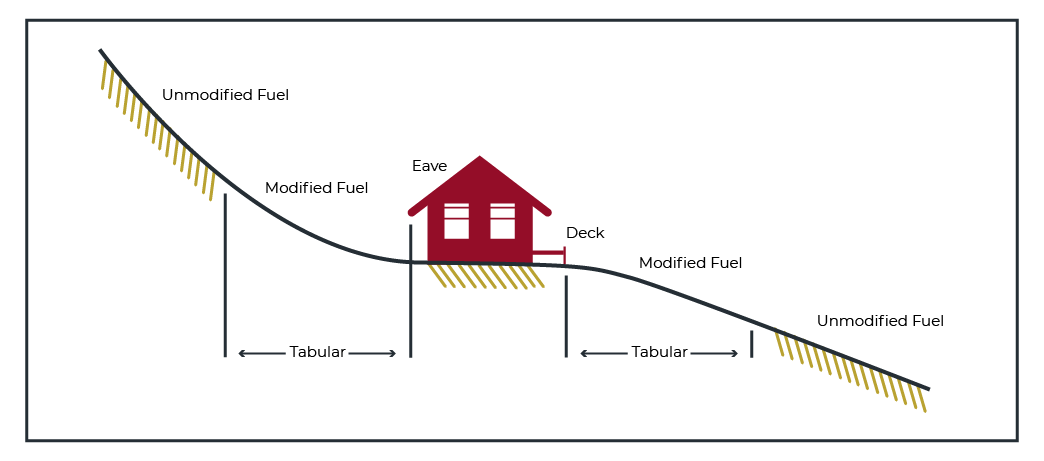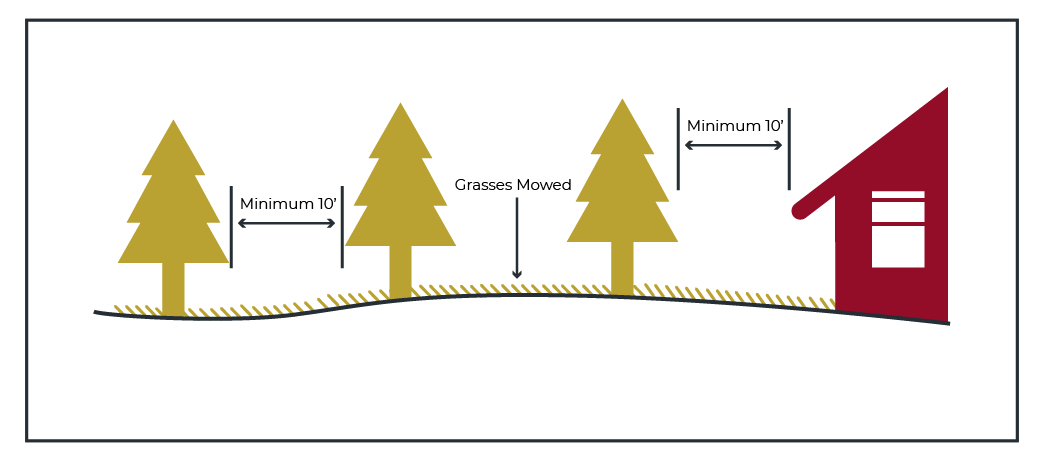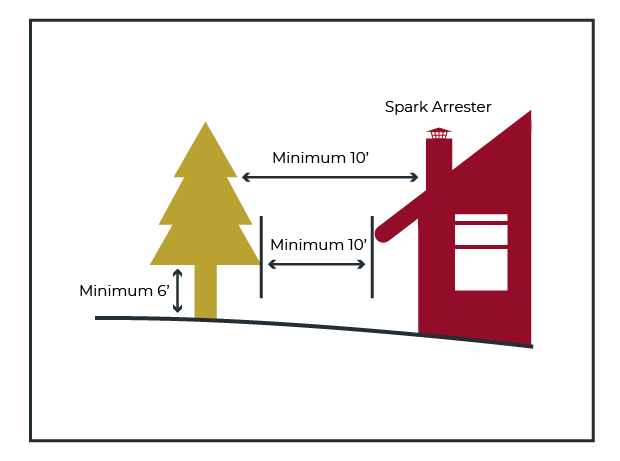Our Mission: “Committed to excellence, service, and the protection of life and property in our community.” |
Contact UsOur Mission: “Committed to excellence, service, and the protection of life and property in our community.”
Our Mission: “Committed to excellence, service, and the protection of life and property in our community.” |
Contact UsAny building or structure built in the jurisdiction of the Truckee Meadows Fire Protection on or after August 2013 has been subjected to the provisions of the International Wildland-Urban Interface Code (WUI) if the building or structure was built in an area designated as Moderate, High, or Extreme Hazard.
Buildings in existence at the time this code is adopted may not comply with the requirements in the code. The code specifically states that those non-complying buildings may continue to be used provided they were constructed in accordance with the code at the time of construction.
An area either natural or manmade, where material capable of allowing a fire to spread unchecked has been treated, cleared or modified to slow the rate and intensity of an advancing wildfire and to create an area for fire suppression operations to occur.
The defensible space has a lower fuel content, so the fire is slowed as it approaches a structure. The defensible space itself is a level of protection to reduce the fire impact on structures.
The defensible space provides an area surrounding structures where fire fighters can operate to defend against an approaching wildfire.
If your property is located in an area designated by the International Wildland-Urban Interface Code (WUI) as Moderate, High, or Extreme Hazard, you are required to maintain Defensible Space as listed in Table 603.2 of the WUI Code. Depending on the availability of water supply when the building was constructed, your property may have required 1.5 times the distance in table 603.2.

As the owner, YOU are responsible for modifying, removing, and disposing of nonfire-resistive vegetation on your property.
If Defensible Space was required for the construction of your building and/or structures on the property it must be maintained for the life of the building.
IMPORTANT – Failure to maintain Defensible Space as required by WUI may impact your insurance claim in the event of a fire incident.


Tree crowns extending to within 10 feet (3048 mm) of any structure shall be pruned to maintain a minimum horizontal clearance of 10 feet (3048 mm). Tree crowns within the Defensible Space shall be pruned to remove limbs located less than 6 feet (1829 mm) above the ground surface adjacent to the trees.
